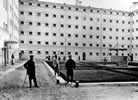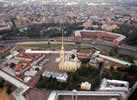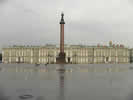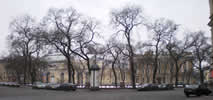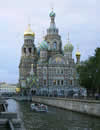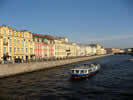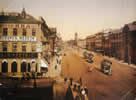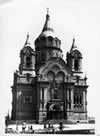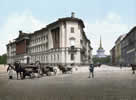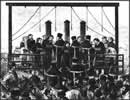Map of St. Petersburg


The House of Preliminary Detention
Built on a new American model in the 1870's with cells opening on to landings, it held up to seven hundred men and women. Most were charged with revolutionary activities and brought to trial in the adjoining court building. Tsar Alexander II's assassins were held here on the eve of their execution in April 1881. Lenin was also a prisoner at 'the preliminary'. In Soviet times it had an even worse reputation as a place of torture and repression.

The SS Peter and Paul Fortress
Peter the Great's cathedral fortress on the Neva, and a state prison from 1718 to the revolution. Princes, poets, journalists, revolutionaries and reformers were confined within its walls, including the writer Dostoevsky. The prominent People's Will conspirator, Alexander Mikhailov was held in appalling conditions here after his trial in 1882, and died a short time later.

The Winter Palace
The magnificent baroque palace of the Russian tsars, the seat of imperial power in the empire from the first half of the eighteenth century until the revolution in 1917. In 1880 a member of The People's Will smuggled dynamite into a cellar and the explosion almost succeeded in wiping out the tsar and members of his family. The year before, the tsar had narrowly missed being shot in Palace Square.

Malaya Sadovaya Street
The People's Will revolutionaries rented a basement premises and under the guise of running a cheese shop tunnelled into the middle of the road to place a large mine. It was to have been detonated on the 1st March 1881 as the tsar made his way to the Sunday parade in Manezhnaya Square, but the royal entourage passed by a different route.

The Resurrection Cathedral
This colourful church in a traditional Moscow style was built on the canal embankment over the place where Tsar Alexander II fell mortally wounded on 1st March 1881. During Soviet times it was rededicated as a museum in memory of his assassins - The People's Will.

Fontanka 16
The feared headquarters of the tsar's Third Section, the secret police department charged with hunting down enemies of the state. By 1880 the section was not only responsible for the detection of terrorists, but for the suppression of liberal ideas, censorship of the press and theatre. It is still in use as a police building.

The Nevsky Prospekt.
The city's main artery linking palaces, ministries, shops and libraries; in 1880 The People's Will rented a number of apartments at the less salubrious eastern end of the prospekt. The architect of the plot to kill the tsar, Andrei Zhelyabov was arrested at one of these, and it was his lover, Sophia Perovskaya who led the bombers on 1st March 1881. Nine days later, she was spotted in a cab on Nevsky and arrested too.

The Church of St.Boris and St.Gleb
The church was commissioned in 1869 to mark Alexander II's 'miraculous escape' from an assassination attempt three years earlier. But work was still taking place when The People's Will succeeded in killing the tsar. It was used as a warehouse in Soviet times and demolished in 1975.

Voznesensky Prospekt
It was at Vera Figner's apartment on Voznesensky that the executive committee of The People's Will took the decision to carry out the attempt on 1st March, and where the bombs were put together. In the days after the death of the tsar it was one of the few 'safe apartments' not raided by the gendarmes.

The Semenovsky Parade Ground
The Soviets renamed it Pionerskaya Square and built a youth theatre on the site, but at the end of nineteenth century it was the parade ground of the Semenovsky Life Guards and a place of public execution. Andrei Zhelyabov, Sophia Perovskaya and three of the other regicides were hanged here on 3rd April 1881. A crowd of some eighty thousand witnessed a bungled execution with two of the condemned taking many minutes to die.
Click here to go back

